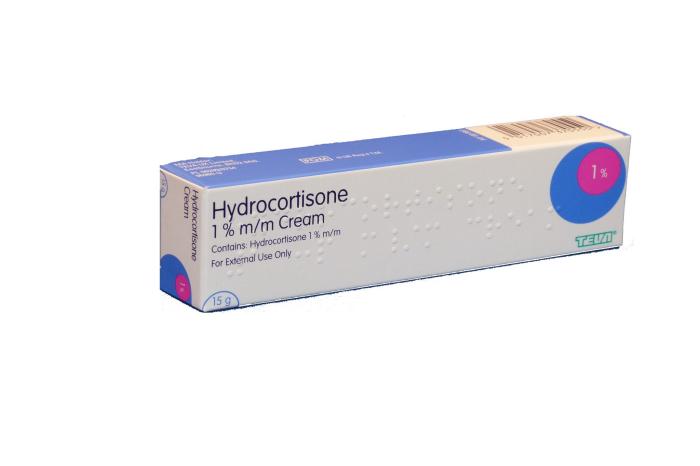Diaper rash is a common concern for many parents, and finding the right treatment can be challenging. One question that frequently arises is whether hydrocortisone cream is a suitable option for treating diaper rash. This article will explore the use of hydrocortisone for diaper rash, including its benefits, potential risks, and alternative treatments.
Understanding Diaper Rash
Diaper rash is an inflammation of the skin in the diaper area, often caused by irritation from moisture, friction, or exposure to certain materials. Here’s a closer look at diaper rash and its typical symptoms:
a. Causes of Diaper Rash
Diaper rash can be triggered by several factors, including:
Prolonged Exposure to Wet Diapers: When a baby’s skin remains wet or soiled for an extended period, it can lead to irritation.
Friction: Rubbing from the diaper or clothing can irritate the skin.
Irritants: Ingredients in baby wipes or diapers can sometimes cause sensitivity.
Bacterial or Fungal Infections: Infections like yeast infections can contribute to diaper rash.
b. Symptoms of Diaper Rash
Common signs of diaper rash include:
Red, inflamed skin
Bumps, sores, or peeling
Discomfort or fussiness in the baby
What is Hydrocortisone?
Hydrocortisone is a topical steroid that reduces inflammation and itching. It is commonly used to treat various skin conditions, including eczema, dermatitis, and allergic reactions.
a. How Hydrocortisone Works
Hydrocortisone works by suppressing the immune response and reducing inflammation in the skin. It can help decrease redness, swelling, and itching.
b. Available Forms
Hydrocortisone is available in various forms, including:
Creams: For application to the skin.
Ointments: Thicker formulations that may provide a more prolonged effect.
Lotions: Lighter formulations that are less greasy.
Using Hydrocortisone for Diaper Rash
While hydrocortisone can be effective for reducing inflammation, its use for diaper rash requires careful consideration.
a. When to Use Hydrocortisone
Hydrocortisone may be considered if the diaper rash is severe and other treatments have not been effective. It may be useful in reducing inflammation and discomfort caused by more intense rashes.
b. Risks and Considerations
Here are some important factors to consider:
Potential Side Effects: Hydrocortisone can cause side effects, including thinning of the skin or increased susceptibility to infections if used excessively or improperly.
Not a Cure-All: Hydrocortisone does not address the root causes of diaper rash, such as moisture and friction. It should be used in conjunction with other preventive measures.
Short-Term Use: It is generally recommended for short-term use and should not be applied frequently or in large amounts.
Safe Use of Hydrocortisone for Diaper Rash
If you decide to use hydrocortisone for diaper rash, follow these guidelines to ensure safe and effective use:
a. Use as Directed
Always use hydrocortisone according to the instructions provided by your healthcare provider or the product label. Avoid applying more than recommended.
b. Apply Sparingly
Use a thin layer of hydrocortisone on the affected area. Applying too much can increase the risk of side effects.
c. Monitor the Rash
Keep an eye on the rash to see if it improves. If there is no improvement or if the rash worsens, discontinue use and consult a healthcare provider.
d. Avoid Use on Broken Skin
Do not apply hydrocortisone to open or broken skin, as this can lead to further irritation or infection.
Alternative Treatments for Diaper Rash
If hydrocortisone is not suitable or if you prefer other options, several alternative treatments can effectively manage diaper rash:
a. Diaper Rash Creams and Ointments
Over-the-counter diaper rash creams are specifically designed to treat and prevent diaper rash. Some common ingredients include:
Zinc Oxide: Forms a barrier on the skin to protect against moisture and irritants.
Petrolatum: Helps to keep the skin moisturized and protected.
b. Anti-Fungal Creams
For diaper rash caused by fungal infections, such as yeast infections, anti-fungal creams can be effective. These are available over-the-counter or by prescription.
c. Natural Remedies
Several natural remedies can help soothe and heal diaper rash:
Coconut Oil: Has anti-inflammatory properties and helps moisturize the skin.
Aloe Vera: Provides soothing relief and promotes healing.
Breast Milk: Contains antibodies that can help heal the rash.
d. Prevention
Preventing diaper rash involves keeping the area clean and dry. Consider these tips:
Frequent Diaper Changes: Change diapers regularly to avoid prolonged exposure to moisture.
Gentle Cleansing: Use mild, fragrance-free wipes or warm water and a soft cloth.
Allow Air Time: Give your baby some diaper-free time to let the skin breathe.
When to Consult a Healthcare Provider
If diaper rash does not improve with standard treatments or if you have concerns about using hydrocortisone, consult a healthcare provider. Seek professional advice if:
a. Persistent or Severe Rash
If the rash persists despite treatment or appears severe, it may require medical evaluation.
b. Signs of Infection
If there are signs of infection, such as pus, swelling, or fever, consult a healthcare provider promptly.
c. Uncertain Diagnosis
If you are unsure whether hydrocortisone or another treatment is appropriate, professional guidance can help you make the best decision for your baby’s health.
See also: Can I Use Neosporin on Diaper Rash
Conclusion
Hydrocortisone can be effective for reducing inflammation associated with diaper rash, but it is not always the best first-line treatment. It should be used with caution, and its application should be limited to specific situations under professional guidance. There are various effective alternatives for treating diaper rash, including diaper rash creams, anti-fungal treatments, and natural remedies.
Preventing diaper rash through proper diapering practices and using gentle, protective products can also help keep your baby comfortable and free from irritation. If you have concerns or if the rash does not improve, consulting a healthcare provider is essential for ensuring your baby’s health and well-being.


